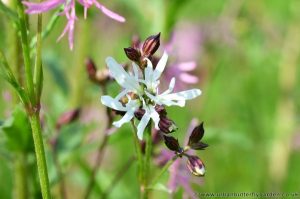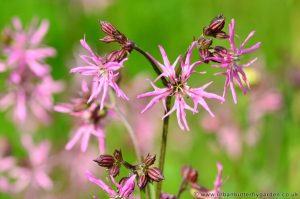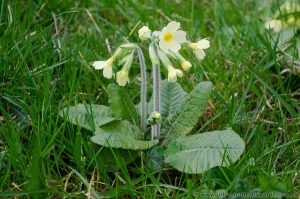about
Ragged Robin (Lychnis flos-cuculi) is a British wild flower of the Carnation family. As the name suggests the flowers have quite a distinctive ragged shape and are pink in colour, they may be found from May to July. On occasions some plants may produce a single stem of pure white flowers, the buds look identical to the pink flowers before they open.
In the Garden
In my garden, Ragged Robin begins to bloom around the time when the Meadow Saxifrage and Salad Burnettt are in full flower. It is a great plant for attracting early spring pollinators like Bees and Butterflies.
After flowering, any seed pods left on the plant to dry, can contain many small black seeds. With a little patience they can be collected, sown and grown on to produce plants for the following spring.
During the winter and months when not in flower, plants can be spotted where they grow, by their tight whorl of low growing green sword like leaves
habitat
When found growing in the wild, it is often in damp but free draining soils in areas such as meadows, woodland rides or pond edges in alkaline soils.
grow Ragged Robin from seed
Seeds to grow your own Ragged Robin (Lychnis flos-cuculi) plants, are available from Thompson & Morgan, for more information Visit Thompson & Morgan Here
Plant Information
- Name: Ragged Robin (Lychnis flos-cuculi)
- Group/Family: Caryophyllaceae (Pink family) (Carnation family)
- Type: Hardy Perennial
- Grow from seed: Easy
- Flower Colour: pink/red occasionally White
- Flowering: May- July
- Soil type: Free draining clay, loam
- Habitat: Damp Areas, Meadows
- Position:Sun/semi-shade
- Height: 30-65cm
- Similar appearance to: Ragged Robin
- Larval food plant:
- Nectar plant (pollinated by): Bees, Orange-tip Butterfly, Green-veined White Butterflies
- Photograph:13th May
- Location: Growing in my Garden
- V1.0



